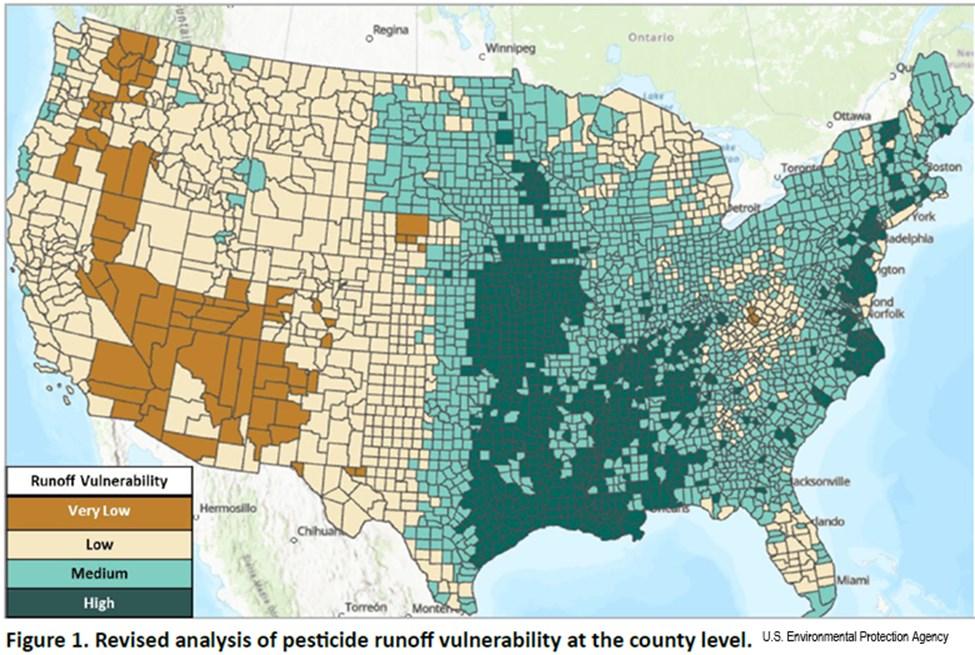New Ecological Mitigation Menus to Reduce Pesticide Runoff
Pesticide runoff can occur when pesticides are carried by water off an application site. This usually occurs when water is applied to the soil faster than it can be absorbed, resulting in excess water flow across the land. Pesticide runoff into streams can pose risks to aquatic life, fish-eating wildlife, drinking water, etc. Therefore, new ecological mitigation requirements are being added to certain pesticide labels to reduce pesticide runoff.
What is the purpose of these new runoff mitigations?
These measures are designed to reduce pesticide movement out of a treated field. These practices are part of a wider strategy to protect endangered and non-target species, and will be part of future pesticide registration decisions.
Will these new runoff mitigation requirements be applicable to all pesticides?
No, only the application of certain pesticides will require these measures be implemented. Check the pesticide label for a section dedicated to runoff/erosion mitigation.
What do I do if I plan to spray a pesticide with one of these new mitigation requirements?
First, determine whether the application area is in a county designated as having high runoff vulnerability. The EPA has classified all counties on the Eastern Shore of Maryland and Delaware, as well as Anne Arundel, Charles, and St. Mary’s counties as having high runoff vulnerability. Initially, only applications to fields in these counties will require additional mitigation.
Are there exemptions for implementing these mitigations?
Yes, additional mitigation will not be required in counties with high runoff vulnerability if any one of the following criteria are met during an application:
- the soil texture is comprised of over 50% sand, a loamy sand, or sandy loam soil;
- the application area has a slope of ≤ 3%, or has a perimeter berm system;
- the application is a partial field treatment, such as a banded or spot spray application;
- the pesticide is incorporated into the soil mechanically or via irrigation; and
- the treated field has subsurface or tile drains installed with controlled drainage.
My application area does not meet any of the aforementioned criteria. Now what?
Visit https://www.epa.gov/pesticides/mitigation-menu for a list of options. Even if additional mitigation is required, several EPA accepted practices have already been adopted in the area, such as reduced or no tillage, and the use of cover cropping.
This article appears in September 2024, Volume 15, Issue 6 of the Agronomy News.
